I gave a talk at the Victorian Society’s “Beer and Brewing Study Day” yesterday in the Art Workers’ Guild building in Bloomsbury on “The Decline and Fall of Heavy Wet”, “heavy wet” being a 19th century slang expression for porter. I described how in 1843 the Scottish journalist William Weir called porter “the most universally favoured liquor the world has ever known,” and declared that “porter drinking needs but a beginning: wherever the habit has once been acquired, it is sure to be kept up.” But even then, the dark, hoppy, bitter beer that had been a favourite of everybody from dockers to dukes for more than a hundred years was in decline, losing sales to mild ale, a sweeter pale drink. Within 40 years mild ale had completely eclipsed porter as the favourite style of most beer drinkers, and mild was to remain number one until the 1960s – when it too, was turfed off the throne. The beer that replaced it, however, bitter, had barely three decades at number one before falling to the growing popularity of lager, which became the biggest seller in the 1990s. And I finished with this question for the audience: is there any reason why Big Lager should not, one day, follow Big Porter – and Big Mild – into oblivion?
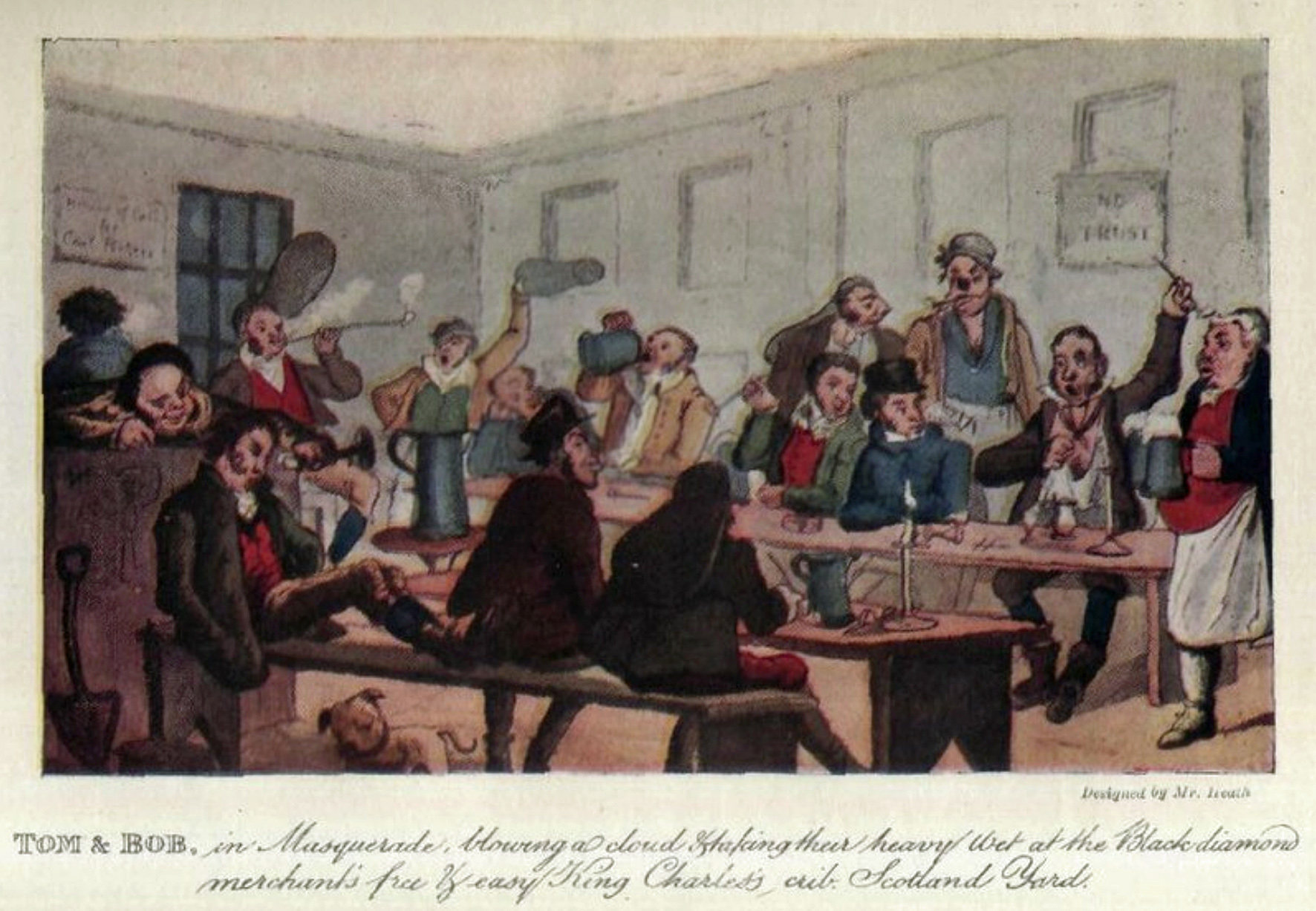
Big Porter really was big. Those who brewed it became astonishingly wealthy. Samuel Johnson was talking about the opportunities available to the purchaser of a London porter brewery when he spoke about becoming “rich beyond the dreams of avarice”. Samuel Whitbread, who ran one of the capital’s biggest porter breweries, in Chiswell Street, was “said to have been worth a million at least” when he died in 1796, according to the Gentleman’s Magazine, a fortune equivalent to perhaps £1.5 billion today. The porter brewers’ wealth brought them considerable influence: all seven of the biggest London breweries had multiple members of parliament among their partners.
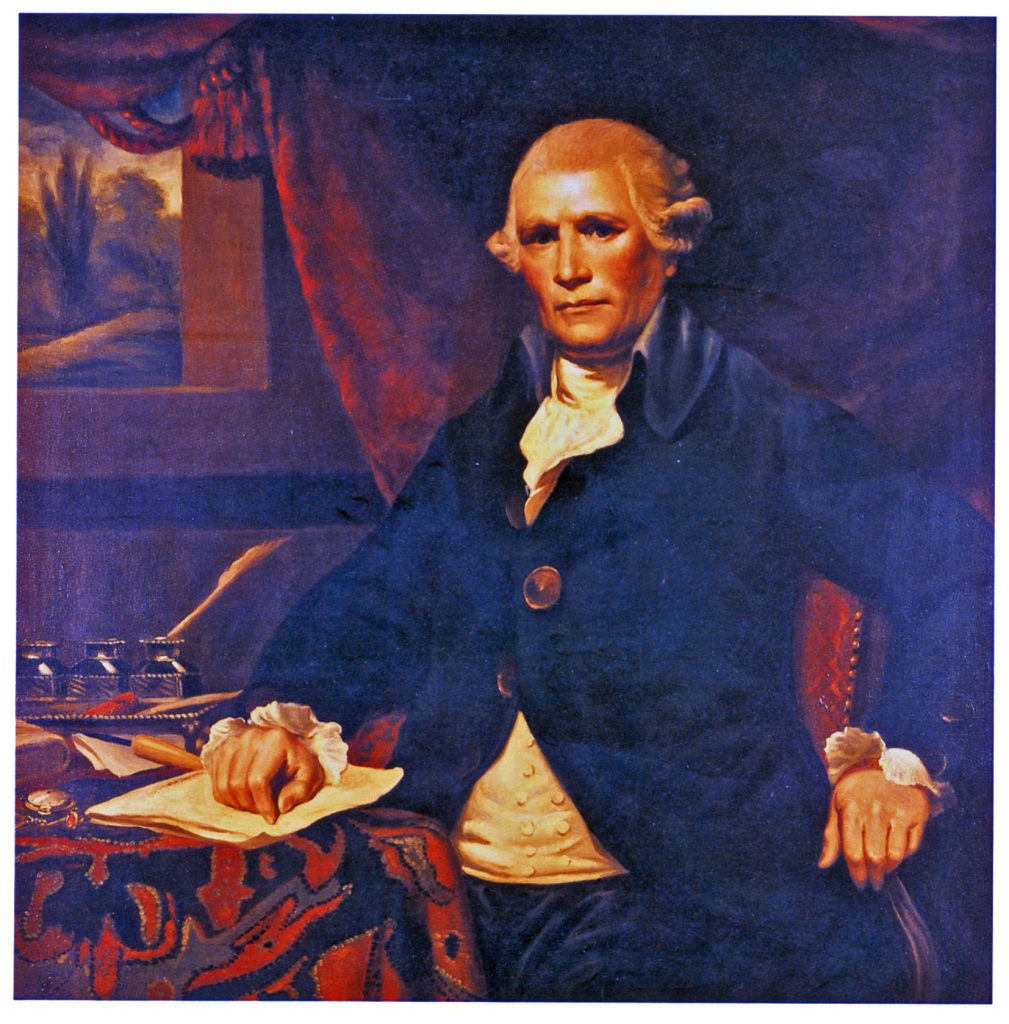
In 1823, porter output in London hit 1.8 million barrels, after a continual rise that had lasted 50 years. But this was its peak: by 1830 porter production would be down 20 per cent on its 1823 level. What was replacing it was mild ale, made for quick consumption, slightly stronger than porter, pale in colour, unaged and therefore sweeter, less acid than porter. A House of Commons select committee on the sale of beer in 1833 was told that the London drinker “will have nothing but what is mild, and that has caused a considerable revolution in the trade, so much so that Barclay and Perkins, and other great houses, finding that there is a decrease in the consumption of porter, and an increase in the consumption of ale, have gone into the ale trade; nearly all the new trade is composed of mild ale.”
In the early 19th century, ale brewers and beer (that is to say, porter and stout) brewers were still different concerns in London, with the ale brewers much smaller than their rivals. But as the demand for ale grew, so the ale brewers grew too, boosting companies such as Charrington in the Mile End Road and Courage at Horsleydown on the south bank of the Thames, almost opposite the Tower. Charrington’s trade increased almost 2 1/2 times between 1831 and 1851, for example. In 1814 it was producing just 16,510 barrels a year, all ale, when Barclay Perkins, then London’s leading brewer, was making 257,300 barrels of porter: by 1889 Charrington’s output had risen to more than 500,000 barrels a year, level with Barclay Perkins.
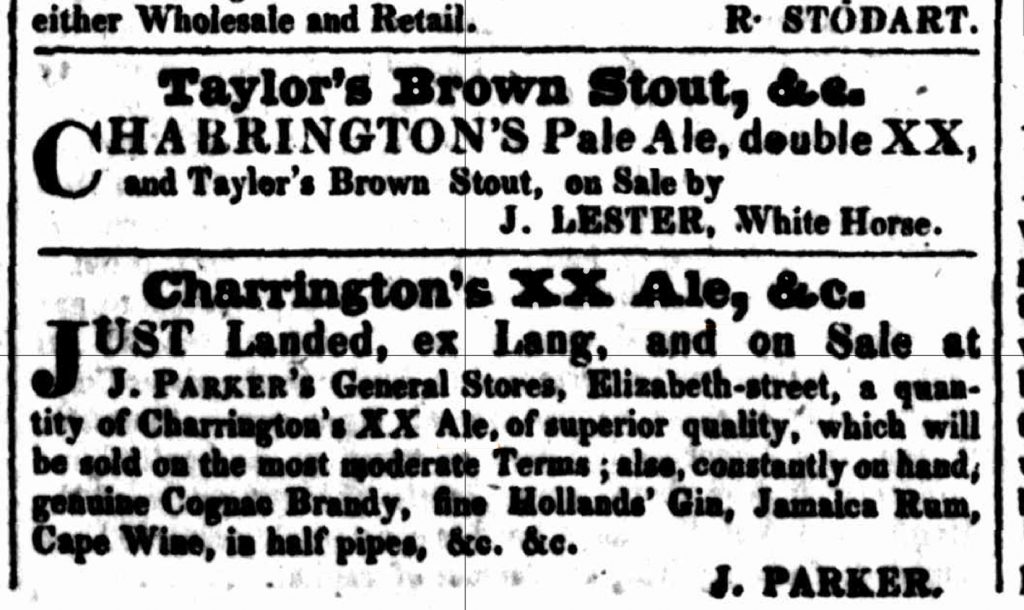
The porter brewers responded by moving into the ale market, particularly after the Beerhouse Act of 1830 dramatically increased the number of available licensed outlets. Whitbread, then the third or fourth biggest brewer in London, whose production was entirely porter up to 1834, started brewing mild ale in 1835. Ale quickly rose from nowhere to more than 10 per cent of Whitbread’s production by 1839, and more than 20 per cent by 1859, when Whitbread’s porter sales had dropped by almost 30 per cent compared to 25 years earlier. At Truman’s, then fighting with Barclay Perkins to be London’s biggest brewer, the swing from porter was stronger still, with ale making up 30 per cent of production by 1859.
Thomas Beames was still able to write in 1852, in a book called The Rookeries of London, that for the working classes “porter is the common beverage with them, just as vin ordinaire is in France.” But by then there were just two porter-only breweries left, Reid’s in Liquorpond Street, Clerkenwell, and Meux & Co, off Tottenham Court Road. Porter still made up three quarters of London beer sales even in 1863. But the pace against it, was increasing. A comparison of porter and ale sales at Whitbread and Truman, two of the very biggest London brewers, shows a steady if slow rise for ale as a proportion of total output for three and a half decades to around 25 per cent by 1864, followed by big leaps after that: 36 per cent in 1869, 45 per cent in 1874, more than 60 per cent for Truman in 1879, and 57 per cent for Whitbread.
A writer in 1875, reminiscing about the beers of 70 years earlier, during the Napoleonic wars, wrote: “It is strange how the taste of those days for old stale beer has turned to the opposite extreme in the liking for the new and the sweet by the present generation.” In 1872 Meux & Co, which still held on its premises a “reservoir” of porter said to hold the equivalent of 35,000 barrels of beer, had given up its exclusive dedication to porter and stout and began brewing ales as well. Three years later, Reid’s began the construction of a new ale brewery, which opened in 1877.
Although the mild ale of the final decades of the 19th century is regularly described as “sparkling”, at some point it changed from being pale to, mostly, being brown again, as it had been in the 17th century. According to a writer in the Daily Telegraph in 1928, “The taste for a brown mild ale was developed about 50 years ago” – that is, around 1878 – “and mild ale soon became the chief and most popular drink among the lower-priced beers.” That the generality of milds were dark before the First World War is confirmed by an American brewers’ handbook of 1908, which said: “Mild ales are usually brewed of a darker color than old ales, with less original gravity and less hops … sometimes … mild ales receive an addition of caramel solution to the closure of the principal fermentation.”
By 1908 “fourpenny beer (mild ale)”, so called because it retailed at four pence a quart, was being described as “the large bulk of the trade of the country”. The pressure on brewers to lower the gravity of their beers during and after the First World War, in large part to keep prices down after huge increases in tax, saw porter drop from around 1055OG to 1036. When the war ended, former porter drinkers turned, if they could afford it, to stout, which was now the same strength as pre-war porter. Gradually brewers began dropping porter from their ranges. In 1920, for the first time, Watney Combe Reid, an amalgamation of three big former porter brewers, sent no porter to the Brewer’s Exhibition for sampling. Truman’s, another former great porter brewer, stopped making the beer in 1930. Taylor Walker was still brewing porter in 1936, but stopped soon after. The writer TEB Clarke in 1938 called porter “a lowly brand of draught stout selling in the Public [bar] at fourpence a pint,” about the cheapest beer available. Whitbread stopped brewing porter in the 1940s. It survived – just – in Ireland, but in 1958 the Times newspaper’s survey of Beer in Britain stated: “Porter, the strong dark staple beer of 18th century England, is no longer brewed in Great Britain.” Heavy wet was dead.
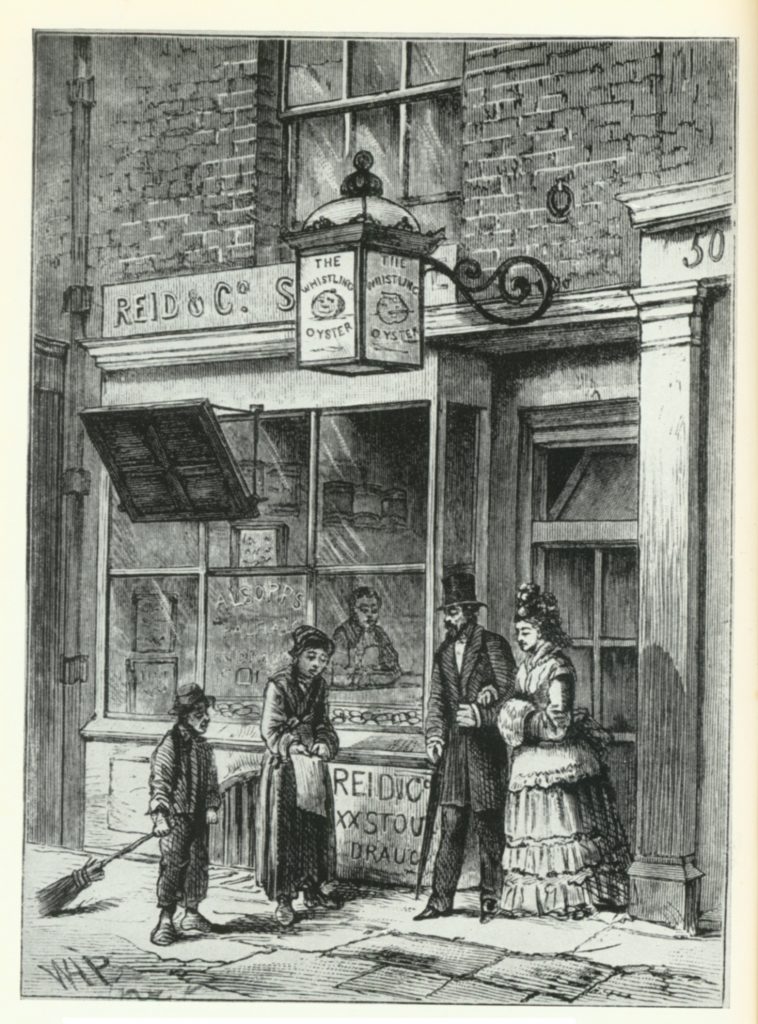
There was one curious difference between porter and the beer that replaced it, mild. Porter, despite being named for the working classes, was a beer that appealed to all levels of society, and was certainly not shunned by the aristocracy. Harvey Combe, main partner in the big porter brewery in Long Acre, Covent Garden, put on a series of annual dinners at his brewhouse between 1805 and 1810 at which rump steaks cooked at the stokehole of the brewery boiler were served on a malt shovel covered with a tin lid to guests who included the Prince of Wales, the Duke and Duchess of York, the Dukes of Devonshire and Norfolk, Charles James Fox, Richard Brinsley Sheridan and Henry Grattan. The only accompaniment was “sallad”, the only drink porter, the waiters were the brewery workers, the guests sat at a trestle table with a hop sack nailed on as a tablecloth, and ate off wooden plates, though with horn-handled knives and silver forks. The Prince of Wales, after one brewhouse steak-and-porter blow-out in 1806, declared he “never was more pleased” with a dinner. A similar steak-and-porter dinner was held at Truman’s brewery in Brick Lane in June 1831 for the Prime Minister, Lord Grey, and 22 other guests, including the Lord Chancellor, Lord Brougham, and other members of the cabinet. (The great French diplomat Tallyrand, then the French ambassador to Great Britain, had been invited but had to cry off to deal with a political crisis in Belgium.) The Carlton Club in the 1830s, the headquarters of the Tory party, served Guinness, and Benjamin Disraeli, then a young MP, drank it there, with oysters and “broiled bones”. Restaurants at the time supplied ale, stout or half-and-half – ale and porter mixed – to diners “as a matter of course”, Sir Walter Besant wrote in the 1880s
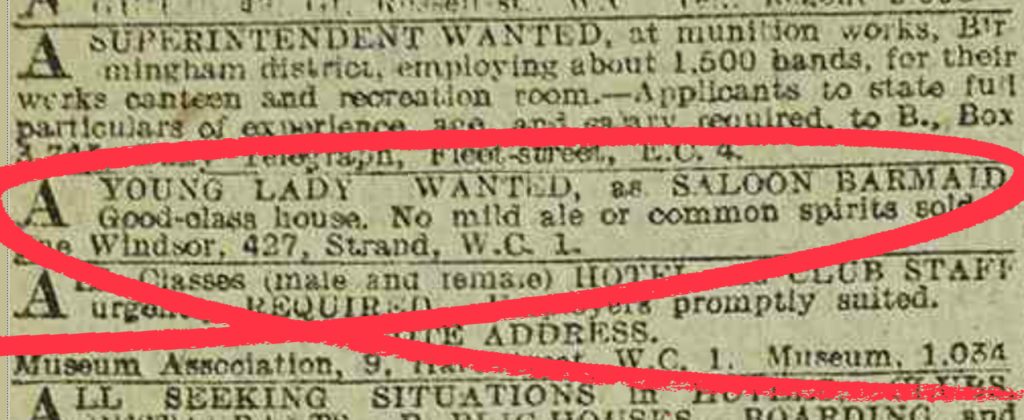
However, mild ale had no cachet: completely the opposite. Bars such as the Windsor in the Strand in London in 1917 would emphasise their class by advertising: “no mild ale sold”. The drink was known as four-ale, from its pre-First World War price of four pence a quart, the place where it was drunk, the public bar, was nicknamed the “four-ale bar”, and the four-ale bar was not regarded as a salubrious place: “smelling like a four-ale bar” was not a complement, and “that’s the sort of language you’d hear in the four-ale bar” was a sign that social mores had been broken. According to an American writing in 1933, pubs in London would not even serve mild ale in the saloon bar, where the better sort of customer drank: “Call for ale in the saloon bar of a London pub, and the barmaid will say, ‘Other side, please,’ jerking her wet thumb in the direction of the public, or four-ale bar; for ale in London is a vulgar word. The middle classes drink bitter, a pale, golden beer so sharply hop-flavoured that foreigners find it undrinkable.”
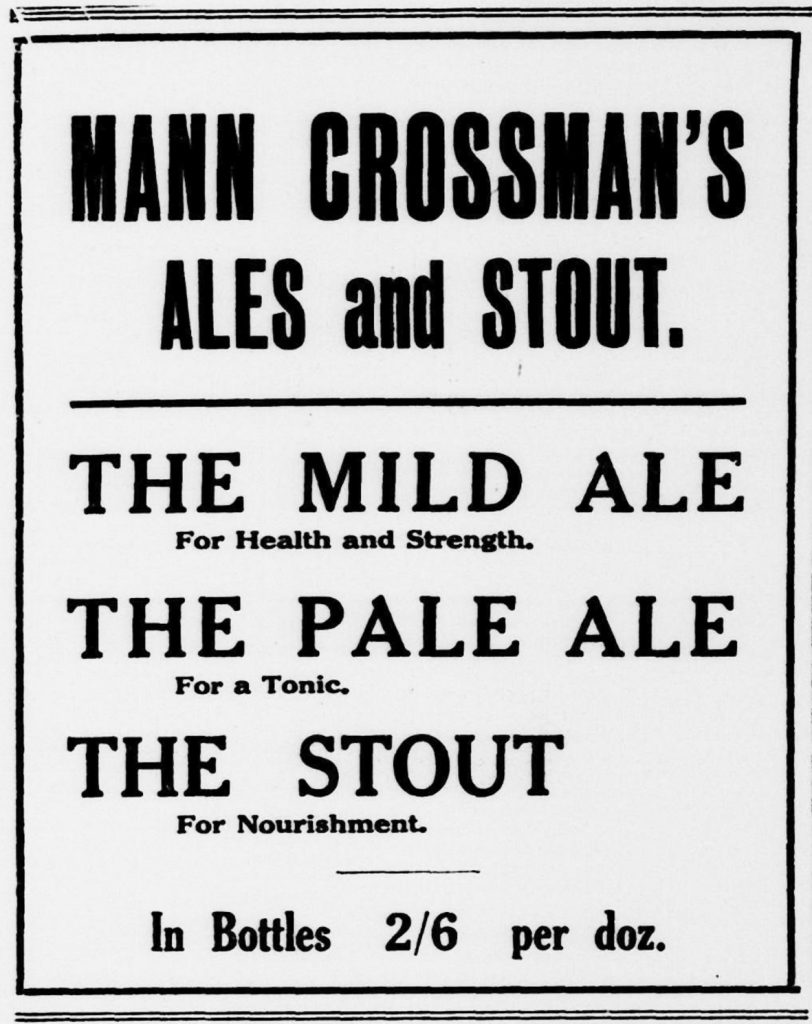
Indeed, it was mild ale’s lower class associations that led to its own decline and fall. In 1959 draught mild was 42 per cent of all beer sales, outselling bitter two pints to one and representing six pints out of 10 served on draught, at 10.3 million barrels a year. But a study published by the Times newspaper in 1958 pointed up mild’s growing problem: “Traditionally bitter is looked on as the bosses’ drink. Any man reckons today he’s as good as his boss. So he chooses bitter.” In 1964 draught mild was down to 33 per cent of beer sales by volume. Around 1969, sales of draught bitter overtook those of draught mild for the first time. Six years later, in 1975, as draught mild plunged to barely one pint in eight of total beer sales, it was passed in popularity by a beer that had hardly existed in Britain in 1959 – draught lager.
Until very recently lager was still increasing its share of the UK beer market, up from 67 per cent in 2002 to 74.8 per cent in 2014. Last year, however, saw the first dip since the early 1990s (when the growth of the “guest beer” market after the Beer Orders of 1989 gave a brief boost to sales of bitter), albeit by less than 1 per cent, as “ale and bitter” pushed up its share to 21.5 per cent of a falling overall market, down 4.7 per cent to 4.25 billion litres (or 25.97 million barrels, in old-style money). With a growing (though still tiny) proportion of even the lager market now “craft”, are we seeing Big Lager start to slide just the way every “big” style has in the past?
I’d say it’s almost inevitable that, yes, Big Lager’s reign will end one day. What the timescale will be, and exactly what will replace it, is hard to guess. The change is likely to be demographics-led: new entrants in the market (those 800,000 or so fresh 18-year-olds legally drinking for the first time every year) choosing something different, rather than their elders altering their purchasing habits. I certainly don’t see those new recruits to alcohol automatically drinking Big Lager: though I may be wrong. But meanwhile the first wave of UK lager drinkers, those who powered the drinks growth in the 1970s as they themselves turned 18, are now in their mid-to-late 50s: give them 10 to 15 years and they’ll be dropping off their perches in vast flocks. That’s about how long I’d give Big Lager, at the most.
Meanwhile I’d just like to plug my credentials as a pundit: back in December, talking about the purchase of the Camden Town brewery by AB Inbev, I said: “I’d look to Italy for the next big acquisition of a craft brewer by a global marque.” Lo, five months later, at the end of April, five months after I wrote this, AB Inbev bought Birra del Borgo, brewer of ReAle, among other beers. Told you …

A big difference is that Porter, Mild and Bitter were all predominantly British products, whereas lager is international. I’m sure I’ve read (probably in your own writings) that 90% of all beer sold in the world is pale lager of some kind – and that’s not going to disappear any day soon.
I don’t see that as a brake on what appears to be the inevitability of changing tastes.
For our school graduation a year ago most people went to a local pub and most of the lads had Guinness myself included followed shortly by the staff. Go to a pub and it is not uncommon to see a young man ordering or drinking a pint of plain. I have moved on and a pint of O’ Hara’s Stout in Doyles pub (inn on account of the hostel and food alongside drink) is heaven.
Steak and Porter in the early 19th century certainly ahead of its time.
Porter wasn’t prdominantly British, it was the world’s first international beer style.
The pre-eminence of Pilsner is already starting to slip. I think people will be shocked to see how quickly it declines once the rot sets in.
I sincerely hope and wish you were right, Ron…my guess though, is that Big Beer’s huge marketing budget is going to make sure their Light Lagers will keep on dominating the beer market for a good many years to come…we may not witness its demise in our lifetime. It’s just too damn cheap and easy, and financially sound, to keep producing the same shite as ever – as long as drinkers are sheepish enough to follow, and the mkt campaigns will make sure of that, I’m afraid. Cheers mate from hot Chile, and hope you’re all safe and sound! (PS: sorry for the late reply, just saw this brilliant piece by Martyn, +4 years late…)
This is a great question. Thinking about bitter and mild recently — those big 50-100 year cycles of popular taste — we’ve been wondering the same thing. Unless people believe that lager is the ultimate evolution of beer, the perfect end product which can’t be improved upon, then something else *must* usurp it. Session IPA might be a contender but, ach, who knows!
(PS. point taken about the earlier darkening of mild — we’ll bear it in mind if/when we ever get chance to update our All About Beer piece for publication elsewhere.)
The difference with lager is that it is nice. Therefore it will always be No1
Difference is in the mostly English speaking world Lager is mostly the byproduct of a Horse.
[…] probleem. Dat je het alvast maar weet. [1] Vgl. http://time.com/3822869/new-coke-history/. [2] https://zythophile.co.uk/2016/05/08/will-big-lager-one-day-go-the-same-way-as-big-porter/. [3] […]
“I’d look to Italy for the next big acquisition of a craft brewer by a global marque.”
Not to question your skills of clairvoyance and prophesy, Martyn, but to add a bit of minutiae for the record:
Camden Town’s purchase was announced on Dec. 21.
The next big acquisition was technically on Dec. 22, when AB InBev purchased Breckenridge (US). Breckenridge brewed about 70,000 barrels in 2015.
The next big acquisition after that was Devil’s Backbone (US), which sold to AB InBev on April 12. Devil’s Backbone brewed around 60,000 barrels in 2015, and had planned to produce 95,000 barrels in 2016.
Birra del Borgo, which announced its sale to AB InBev on April 22, brewed around 10,000 barrels in 2015.
Mmmm, well, OBVS I meant “the next big acquisition outside the US”, Rail, ye fecker ye. Which, actually, I did …
[…] are facing a problem. Just so you know. [1] Compare http://time.com/3822869/new-coke-history/. [2] https://zythophile.co.uk/2016/05/08/will-big-lager-one-day-go-the-same-way-as-big-porter/. [3] […]
Hi Martyn, nice article – it inspired me to take a look at the Dutch situation. Over here in Holland, Heineken is making some pretty silly moves to keep lager in the picture: H41 with ‘Patagonian yeast’, Heineken ‘Extra Fresh’ that is kept in the cooled section of the supermarket. Telling signs that something is slowly going wrong for them. Hundred years ago their pilsener lager was the most expensive beer around in Holland, now it’s the cheap beer drunk by anti-social morons. Not surprising after 100 years of cutting costs…
You can read the article here in English if you’re interested: http://lostbeers.com/lager-is-doomed/
Don’t call the Patagonian yeast “silly” it’s a fantastic and fascinating experiment that could answer some fundamental querstions about the origins of lager yeast and I’d love to try some.
TRhe rest of it, however – you’re probably right …
Hi Martyn, I guess my point is not so much the idea of Patagonian yeast in itself – hey, if it makes good beer, I’m all for it. But after Heineken’s previous weird marketing-driven moves in Holland (Heineken Extra Cold, served from a frozen tap, and Heineken Extra Fresh, with a pancy-pantsy paper wrapper around it to ‘maintain its freshness’, whatever that is for a lagered beer), my expectations are at an all time low.
Clearly the people at Heineken realise that lager is going out of fashion, and they struggle to keep their flagship brand interesting. At the same time they’re very afraid to change it (someone learned a lesson from 1985’s New Coke).
Yeah you don’t need much of a shift in taste for lager to become “the stuff my dad drinks” and once that image sets in it’s hard to reverse a long slow decline.
Heineken H41 is by no means a pilsner and by no means meant as a move by Heineken to keep pilsner (cause that’s what Roel means, not lager in general) in the picture. I’m surprised at how Heineken is almost immediately distrusted once it launches something new. H41 is a limited edition of an experimental beer with the Patagonian yeast. I’m very aware of the Extra Cold and Extra Fresh nonsense, but that doesn’t automatically mean that everything Heineken does is nonsense. Nor does it mean that they’re afraid of losing ground. For the moment, the pilsner consumption in the Netherlands has come to a standstill or almost; it was reduced by only 0,2% in 2015. But the ground it lost during the last 40 or so years (from around 95-97% to 80%) has been filled by low alcohol, alcohol free and radler just the same as by craft or other specialty beers. I spoke to De Molen brewer Menno Olivier this weekend and he’s not at all that optimistic about the speed of the craft beer rising in the Netherlands. The situation here is also completely different from that in Britain, where different ales were always widely available, even when one of the species dominated. I doubt whether pilsener will be doomed in the end.
I suspect that the beverage market of the future will be more fragmented, so there may not be a ‘big’ anything. If I were betting on what supplants lager, I’d have a small bet on the chances of cider. This is based on my son and nephew, both early 20s, having it as their pint of choice.
[…] In a long post on his blog at Zythophile Martyn Cornell does what he’s best at: using his knowledge of history to shine a light on the 21st Century scene. Specifically he asks, ‘Will Big Lager One Day Go the Way of Big Porter?’ […]
[…] the 20th century (and even into it), Mild Ale, in Britain, referred to a non-aged ale, often quite alcoholically strong. But, then, the privations (and the tax privations) of World War […]